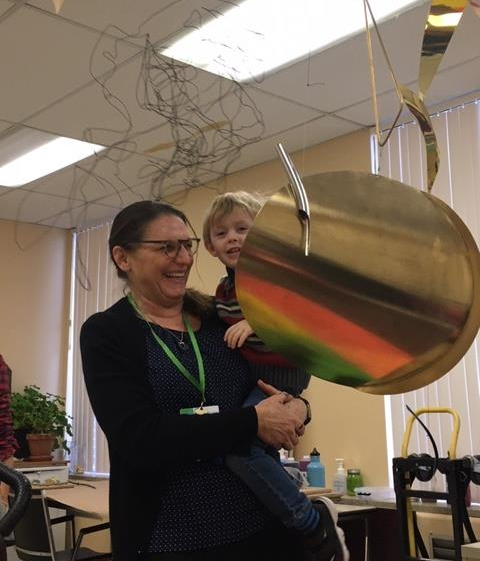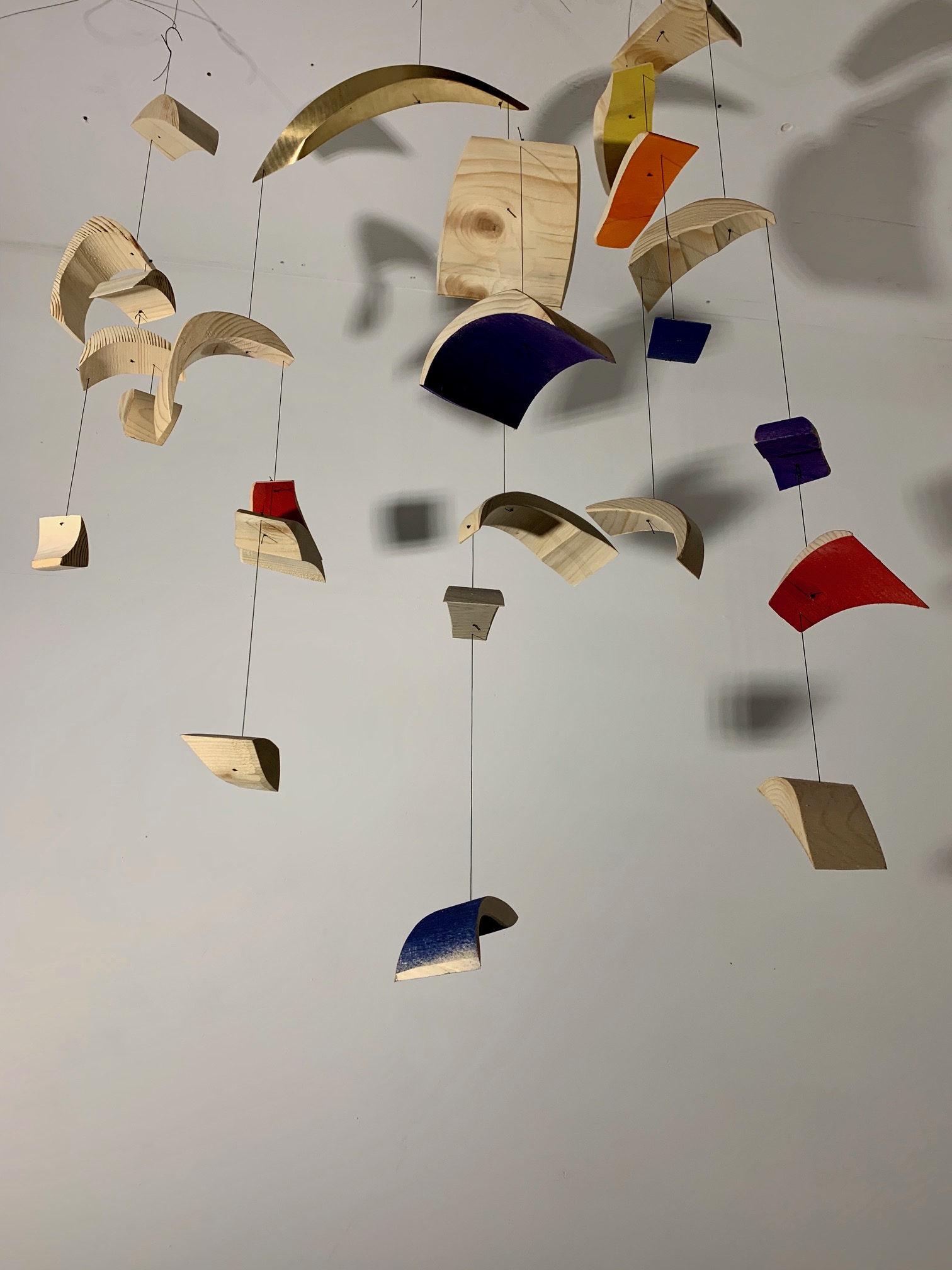Artist turns to kids to design mobile that calms children having an MRI
Photo by Shannon Crossman
By Louise Kinross
About 100 abstract shapes will gently rotate, bounce and occasionally collide—activating a chime sound—as part of a unique mobile commissioned to hang in the waiting room of Holland Bloorview’s new Magnetic Resonance Imaging (MRI) unit, which will be used for research.
“Being around mobiles brings a certain sense of calm and tranquility,” says Dennis Lin (above photo right), the Ontario artist creating the piece. “They take you out of your moment, into a different moment. You can be silent and still, and something else takes over. When children are waiting for their MRI, this will give them focus and reflection, in a different head space.”
The mobile is one of the child-friendly, interactive features of the new MRI unit, which will be used by researchers at Holland Bloorview and beyond to study the brain in children and youth with and without disabilities.
The mobile pieces are made of brass, aluminum, wire, rod and wood, and “are very soft, curvilinear forms in most cases,” Dennis says. “They’re abstract, but when they interact and intersect visually, they create different patterns and you can see different things. You may see a lot of fish, or a flock of birds, or animals grazing.”
Children at Holland Bloorview’s Play and Learn nursery school were part of the design process and were observed, in small groups, looking at the mobile. In addition to smiles, giggles and enthusiastic claps, some preschoolers reported seeing the moon, a spider’s web, and a lion.
“It’s similar to gazing up at clouds and seeing things,” Dennis says. “When the pieces of the mobile interact with each other, your eye and mind create images.”
The children seemed most intrigued by the mobile’s gentle sounds, Dennis says. “When they heard something collide and resonate, they expressed so much joy.”
Teachers noted that one child said the mobile was making music, while another said that it was dancing.
Children will interact with the mobile through an app that allows them to control spotlights and coloured lights—which create shadow patterns—and mini fans that change its movement. Holland Bloorview researchers are exploring accessible features for children with fine-motor problems that might include a larger joystick and buttons, and the ability to make choices by using a head scanner.
“But if a child is triggered by sound or light, the lights can be dimmed and the sound shut off, Dennis says.
Dennis brought wood pieces for the Play and Learn children to paint—and some (see photo below) will be incorporated into the mobile. Earlier, he brought materials to our Spiral Garden arts camp and had campers make 3-D sculptural wire models he could use as inspiration. A former client and parent sat on the hospital’s design committee and met with Dennis to give input throughout the process.
The MRI suite is part of $32 million that donors are investing in Holland Bloorview to grow our research. The unit will be a child-friendly, fully accessible space where children control a number of features—such as projections on the wall that give the feel of being in the ocean or outer space. The project was funded solely through donations.
To learn more about Dennis's work, watch this short film. Below, photos that include Dennis's visit to Holland Bloorview's Play and Learn nursery school.

